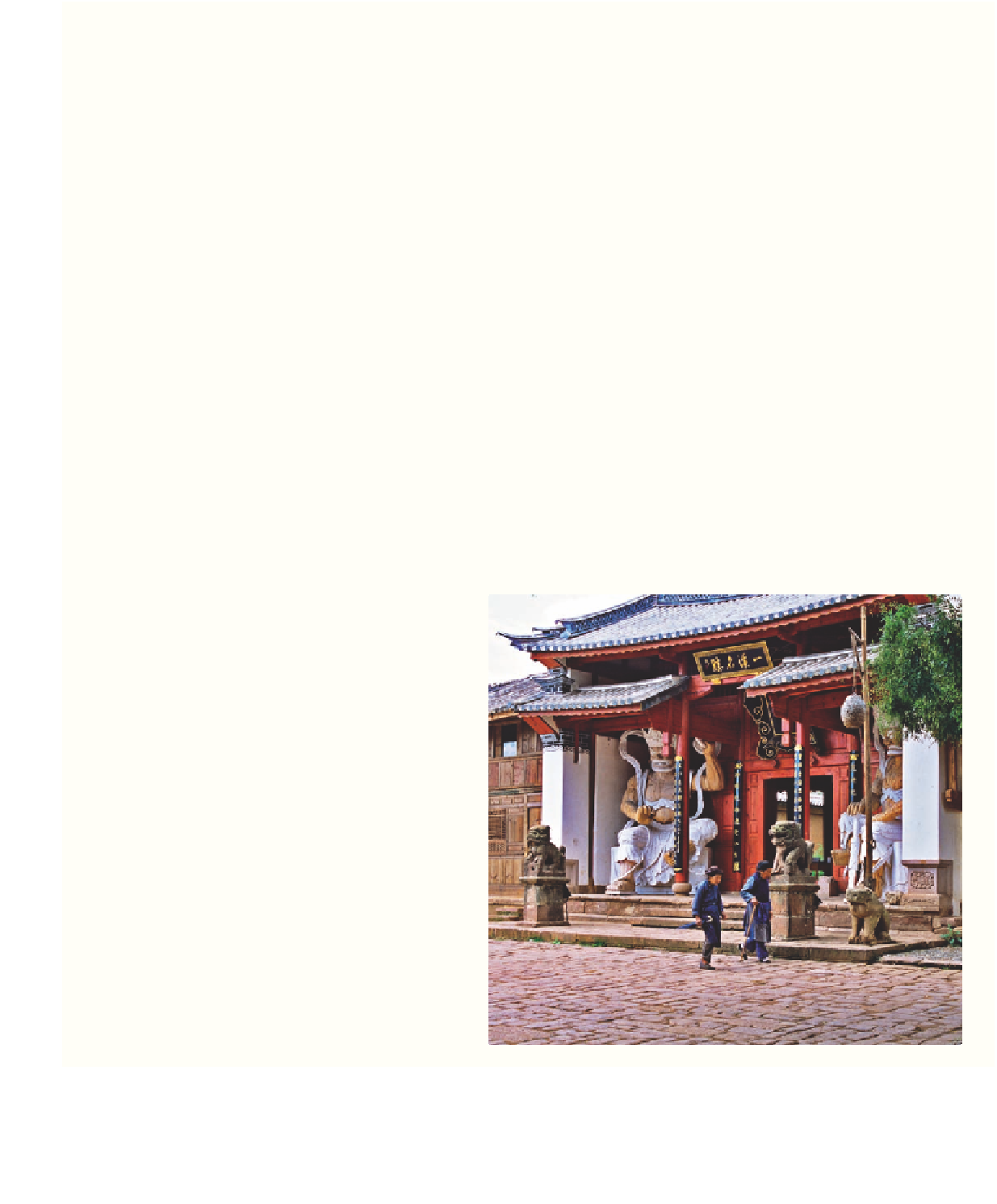Travel Reference
In-Depth Information
uncommon to see up to a hundred dolphins at
a time. It takes more patience to spot sperm
whales and orcas, but using tracking devices on
the boat, you can hear their popping calls from
below to help work out when and where they
might surface.
In his spare time Izumi Ishii works to
persuade other fishermen that his path is a more
profitable one - financially and ethically. Already
the volume of tourists wanting to come on his
tours is too great for him to handle alone, and
other fishermen are getting involved. If visitors
keep coming to Futo to see the dolphins and
whales, then, here at least, they will be better
protected.
Wu Yunxin, who speaks English and runs a
guesthouse in an ornate three-storey opera
house. It's the perfect base for arranging guided
treks along the former salt route, picking wild
mushrooms in season or seeing the seventh-
century Buddhist rock carvings at Shibao Shan.
Or you can just step out the front door of the
guesthouse and take a walk among the wooden
buildings of the village, many of whose roofs are
curved like the spines of upturned topics. Thanks
to the restoration work, paintings hidden in the
soot-covered walls for over a century are being
revealed and brought back to life. And there's a
new buzz on the cobbled streets, especially on
Fridays, when there is a market day once again
and eager traders come from all around the valley.
Need to know
Futo is two hours south of Tokyo
by train (
W
www.japanrail.com). Guests stay in a
family-run inn in Futo, eating local cuisine. Izumi
Ishii's website is currently only in Japanese, but
he can be emailed on
E
ohkaimaru@nifty.com or
contacted through
W
www.bluevoice.org.
Need to know
Mr Wu can accommodate up
to ten guests and offers home-cooked meals.
Shaxi is three hours south of Lijiang or four hours
north of Dali via buses available daily from the
long-distance bus station in either city. For more
on activities, Wu Yunxin and Shaxi's history see
W
www.teahorse.net.
Shaxi's old market
380 follow the CaRavan Route
to sideng, China
For centuries the township of Shaxi, an
ancient collection of sixteen villages in
Yunnan surrounded by terraced paddies, was
a key stopping-post on the caravan route
that connected China with Tibet. Its thriving
market square, trading everything from tea
to horses, was lined with temples, a stage and
guesthouses. That changed in 1950, when the
People's Liberation Army marched on Tibet and
the trade route ground to an almost instant
halt. Over the following years the Communists
banned private markets and Shaxi's deserted
guesthouses crumbled, taken over by squatters
as the marketplace fell into neglect.
Now all that is changing. As the last of its
kind in China, the market in Sideng - the main
village - has been recognized by the World
Monuments Fund as one of the hundred most
endangered heritage sites on Earth, and is
being restored. Visitors can stay nearby with



















Search WWH ::

Custom Search